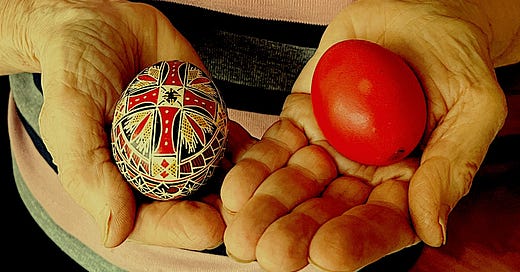
Hi friends!
Thanks for all your sweet sweet messages about my book deal! I’m still floating on a cloud.
This week I’m writing to you from Serbia. Cradled in the heart of the Balkan Peninsula, this is a country shaped by crossings of empires, languages and faiths. Neither quite East nor fully West, it is a liminal place with deep roots, where pagan traditions endured long after the spread of Christianity had taken hold of the rest of Europe.
The Balkans are among the regions in Europe where pre-Christian pagan traditions have survived most strongly. This is due to a mix of factors: the region’s mountainous terrain protected rural communities from centralised religious control; Christianity often merged with (rather than erased) local beliefs; and strong oral traditions kept ancient customs alive. Many seasonal festivals, household rituals, and folk stories in countries like Serbia, Bulgaria and Bosnia still carry clear traces of older animistic and pagan worldviews.
Serbia was one of the last parts of Europe to undergo Christianisation. While regions like Ireland and parts of the Roman Empire were Christianised as early as the 4th–6th centuries, much of the Slavic world—including Serbia—only converted officially in the 9th–10th centuries. And full integration took even longer.
Here, saints were often grafted onto older deities, and Christian feast days absorbed the rhythms of pre-Christian rites. Fertility goddesses became Black Madonnas. Oak trees (still sacred!) were never felled. And echoes of the old faith lived on in village festivals, harvest rituals and folk traditions.
Paganism survived here.
Before the spread of Christianity through the Balkans in the 9th and 10th centuries, the region was rich with indigenous spiritual traditions rooted in animism, ancestor reverence, seasonal rites, and a profound relationship with the natural world. These beliefs, though never systematised in written doctrine, were lived daily—woven into agricultural rhythms, healing practices, oral epics, and festivals that honoured the elements and the land.
In what is now Serbia, many of these pre-Christian customs persisted well into the Christian era, often blending with Orthodox iconography in ways that still shape local culture today.
Keep reading with a 7-day free trial
Subscribe to Under a Fig Tree to keep reading this post and get 7 days of free access to the full post archives.



